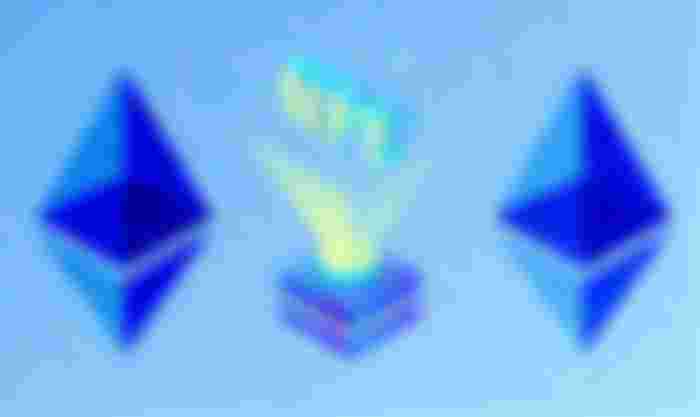Digital art sells for millions of dollars! We are crazy.
The subjectivity of value is always surprising. In fact, value is in the eyes of the lover. It can be anything. It doesn't matter, it doesn't matter. But to one person, it can be worth millions of dollars. Most of us find the prices of certain works of art unbelievable.
How can something created by a 5-year-old be so valuable? The ridiculous world of collectibles may be ridiculous, but it reminds us that value is inherently relative. The rise of non fungible tokens (NFTs) is another manifestation of this very basic phenomenon: value is subjective.
At the other end of the debate, some of us only find value in utility. In other words, value is utility. Anyone who pays millions of dollars for "useless" things is simply an idiot.
Consider all the things you can buy with a million dollars. We can buy food, cars, travel, medicine, and sundries. We can buy certain things. Useful things. In other words, we can buy technology that can improve our lives in one way or another.

The most selfless people can help others. However, some people are more willing to spend money on "useless" things. A picture of a cat. Ink stains on the banana cloth on the wall.
It's no secret that many of us spend a lot of money on silly things. In fact, it can be said that "stupidity" is a very profitable thing. However, it is clear that most of our "ridiculous" expenses have a strong psychological and social component.
They always speak of our basic needs: water, air, shelter, food, health, hygiene and transportation. However, Picasso could not satisfy all these needs. So why buy a Picasso, why spend millions of dollars on "useless" items? After all, we are talking about ink and cloth. For non-fungible tokens (NFT), we are talking about digital codes.
¿Why are these things worth so much money?
Collectibles (using terms) can satisfy more intangible needs. Suppose we buy a work by a local artist. The purchase may be for a number of reasons. We may wish to fund the artist's work so that he can continue his work. The work may also have aesthetic characteristics that we like, and it will create an ambiance in our home or office.
On the other hand, many people buy art simply because they can afford it. That is, they buy art to be a member of the exclusive club, and thus convey a message to society: we have taste, culture and money. Such purchases scream "success." Moreover, because dealers want to send signals to their prospective business partners, advertising will go smoothly.
In short, "ridiculous" purchases are not as ridiculous as they seem.
Of course, we can always buy collectibles for speculative purposes. In other words, to make money. There are always people who want to be part of something bigger. They hope to be part of history by buying relics of the past. Or they want a specific time and lifestyle. But there are others just for the money.

In short, for example, buying a cipher kit can reveal a lot of information about the buyer. For whim, for publicity, for money or for entertainment, the fact is that there is a demand for irreplaceable tokens.
Sometimes this has nothing to do with technology and materials and, in most cases, it has to do with requirements. If there is demand, it is valuable. Many irreplaceable chips lack artistic skills and are easy to copy. But this is not what this is about.
Basically, this is a great game. This is part of becoming an exclusive club. The token is just a ticket. For many people, it is very important to be someone with million dollar tickets. The tickets can be made of gold, marble, paper, or computer code. That's fine. What matters is what the ticket represents. It represents value.
¿Why all the fuss about NFT?
Well, because we're not used to using digital collectibles yet. You can easily copy the numbers. In other words, digital technology is vulnerable to piracy. Which directly destroys the uniqueness of any work. In other words, anyone can copy digital works.
¿What is the point of paying thousands of dollars for the original to get an exact copy?
With the help of blockchain technology, the integrity and originality of digital works can be guaranteed. On February 19, the famous meme of Nyan Cat, a flying cookie cat, sold for more than $500,000. A few weeks later, Canadian singer Grimes sold a series of digital works for more than $6 million

Later, Twitter founder Jack Dorsey sold his first tweet for $2.9 million. The auction of Beeple's works is Christie's first digital artwork, setting a new record for digital art.

Sir, We face the emergence of a new value base digitization. When Marco Polo returned to Europe from China and talked about paper money, the idea that something as trivial as metal could have value was absurd to a society that uses metal as a method of payment. It took a while for society to adapt to the new substrate. Well, digital technology in the world of collectibles is in the "ridiculous" stage. But over time, it will gain legitimacy.
¿How much will Jack Dorsey's first tweet be worth in 100 years?
Bitcoin, cryptocurrencies and blockchain technology challenge our concept of value and money. They remind us that value is more subjective than we think.
Courage is a form of social organization with a strong psychological component. In fact, few things have real intrinsic value. Intrinsic value is an abstraction. It lives primarily in the human mind.
With the rise of Bitcoin, people often hear the saying that "it's not backed by anything." The fact is that many things are not supported at all. Reputation, fame, trustworthiness, text, reputation, beliefs, traditions, ideas, beliefs and identity. All this "nothing" supports many things that we believe to be valuable.



